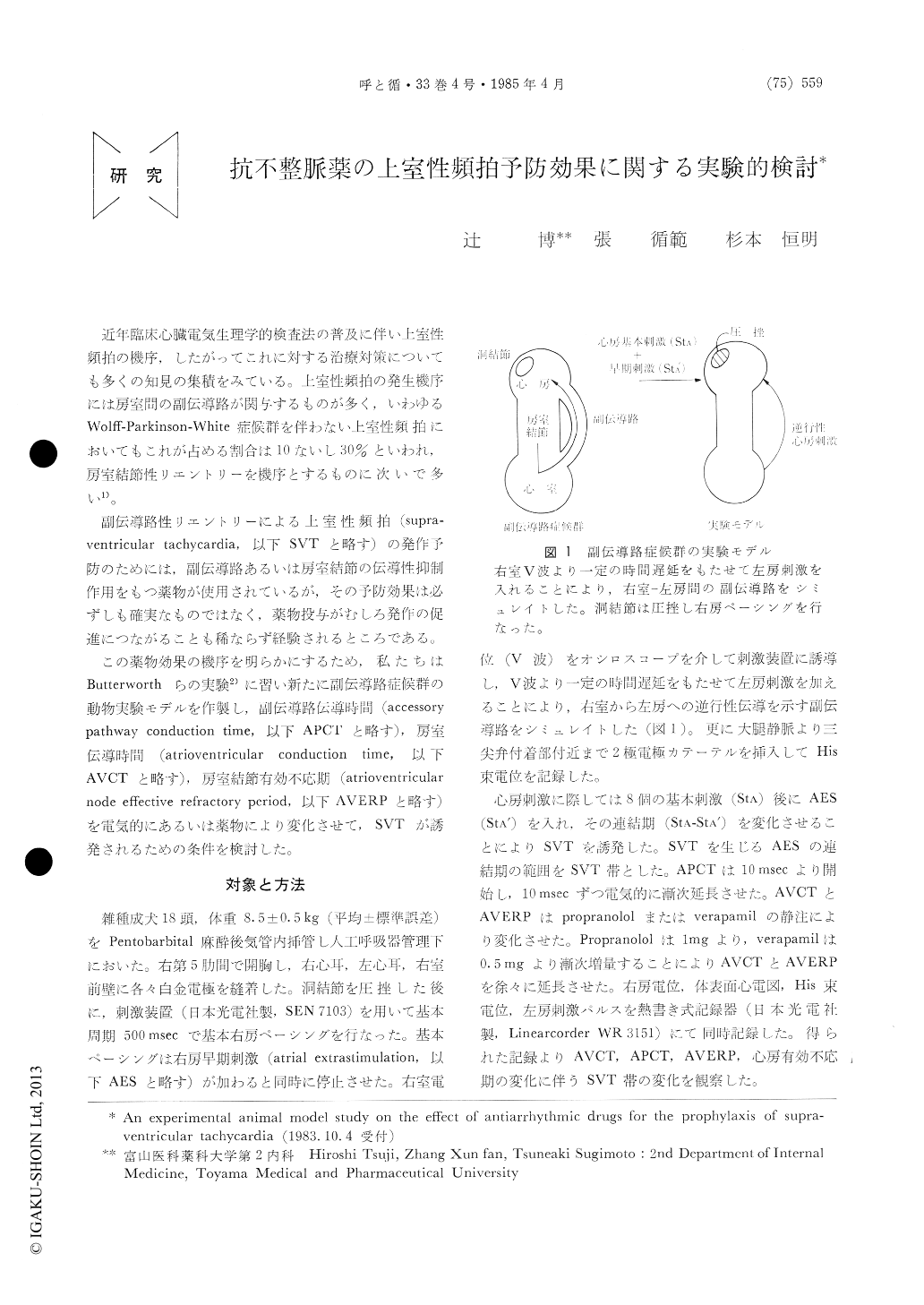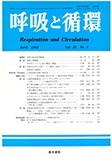Japanese
English
- 有料閲覧
- Abstract 文献概要
- 1ページ目 Look Inside
近年臨床心臓電気生理学的検査法の普及に伴い上室性頻拍の機序,したがってこれに対する治療対策についても多くの知見の集積をみている。上室性頻拍の発生機序には房室間の副伝導路が関与するものが多く,いわゆるWolff-Parkinson-White症候群を伴わない上室性頻拍においてもこれが占める割合は10ないし30%といわれ,房室結節性リエントリーを機序とするものに次いで多い1)。
副伝導路性リエントリーによる上室性頻拍(supra—ventricular tachycardia,以下SVTと略す)の発作予防のためには,副伝導路あるいは房室結節の伝導性抑制作用をもつ薬物が使用されているが,その予防効果は必ずしも確実なものではなく,薬物投与がむしろ発作の促進につながることも稀ならず経験されるところである。
In order to study the therapeutic role of antiar-rhythmic drugs in the mechanism of supraventric-ular tachycardia (SVT), concealed accessory path-way (CAP) syndrome was simulated in 18 dogs, in which an electric stimulation circuit was intro-duced between the right ventricle and the left atrium in place of CAP. The programmed stimu-lation was performed and the SVT zone was determined in a usual manner. The accessory pathway conduction time (APCT) was delayed electrically and the atrioventricular conduction time (AVCT) and the atrioventricular node effec-tive refractory period (AVERP) were modified by the infusion of propranolol or verapamil. The following are the results.
1) The SVT zone was widened as the APCT was increased. (ΔSVT zone=5.38ΔAPCT+11.77 cosec) 2) Atrioventricular node suppressive agents minimized the SVT zone. 3) These drugs were found to prolong the AVERP more than the AVCT. (ΔAVERP:ΔAVCT=1:0.35) 4) Re-duction of the SVT zone after the use of drugs is mainly due to the increase of the AVERP.
For the prophylaxis of supraventricular re-entrant tachycardia involving the accessory path-way, many drugs that suppress the atrioventricular node have been employed so far. But the effects of these drugs are not always consistent, and in some cases the use of these drugs resulted in more fre-quent attacks of SVT. According to our result it can be concluded that a drug that prolongs the refractoriness more than the conduction time is preferable to prevent SVT.

Copyright © 1985, Igaku-Shoin Ltd. All rights reserved.


